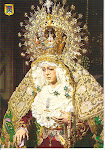The original Santo Niño by Ambeth Ocampo
The original Santo Niño
By Ambeth
Ocampo
Philippine Daily
Inquirer
First Posted 06:09:00
01/26/2011
TWO YEARS ago I accompanied the Czech prime minister in visiting the Abbey
Church of Our Lady of Montserrat in San Beda College near Malacañang. In this
church is a tangible link between the Czech Republic and the Philippines: the
venerated image of the Santo Niño de Praga or Infant Jesus of Prague carved by
Maximo Vicente in the early 20th century. All of 10 minutes was allotted for
photo opportunity and an exchange of pleasantries with the abbot, Fr. Tarcisio
Narciso, OSB, but the prime minister opted for conversation and asked for
coffee.
Welcomed into the cloister, we waited for freshly brewed coffee. When one of
the Presidential Security Group escorts saw the prime minister munching on
cookies he found on the refectory table, he whispered, “He cannot take anything
here. We didn’t bring a taster.” I replied, “We are in a Benedictine monastery,
an order with centuries-old tradition of hospitality.”
Coffee arrived and the PSG escort moved to delay things until the taster
arrived. I prayed to the Santo Niño and reassured him, “I will take full
responsibility. Let him have the coffee.”
Hearing this the abbot softly told me in Kapampangan, “I don’t take coffee at
this time, but pour some into my mug to prove it is not poisoned.”
Nobody keeled over, there was no untoward diplomatic incident, and everything
went well.
The prime minister was added to the list of prominent visitors to the Niño de
Praga in San Beda that includes the late President Corazon Aquino and St.
Maximilian Kolbe, who celebrated Mass there years before he was martyred in a
Nazi concentration camp.
The Pista ng Santo Niño ng San Beda is celebrated
annually on the last Sunday of January. It is amazing that we see no sign of
Santo Niño fatigue since the feast of the Santo Niño de Tondo and the Santo Niño
de Cebu falls on the third Sunday of January. A Santo Niño fiesta was organized
this year by Filipinos in Saint Ignatius Church in the Jesuit-run Sophia
University in Tokyo, drawing curious Japanese to the display of different
images.
There seems to be a Santo Niño for every occupation: doctor, fireman, baker,
etc. There is even a Santo Niño in street clothes known as “Yagit.” Sometimes
you will spot a family in a mall buying clothes for their Santo Niño. I leave
anthropological explanation for this with my neighbor, Mike Tan.
The cult of the Santo Niño goes back a long way. The oldest existing image is
venerated in the minor basilica in Cebu that many people, including me, mistake
for the cathedral. Antonio Pigafetta, chronicler of the Magellan expedition,
wrote that on Sunday morning April 14, 1521 Magellan met with Humabon of Cebu
and convinced the king to convert to Christianity and burn all the idols in his
dominions.
Magellan literally took Humabon by the hand, acting as his ninong when
Humabon was christened Carlos, after the Holy Roman Emperor Charles V, also
known as Charles I of Spain, a name beloved of Filipino drinkers as Carlos
Primero. Fifty men were baptized that morning.
After lunch on the ship, the chaplain returned to Cebu to baptize Humabon’s
wife whose name was not recorded by Pigafetta, which is surprising because a
name has just one or two words compared with his detailed description of her as
being, “very young and beautiful, covered with a black and white sheet; she had
a red mouth and very red nails, and wore on her head a large hat made of palm
leaves, with a crown, also of palm leaves, over it like that of the Pope.”
She arrived with a retinue of 40 ladies and was shown an image of Our Lady,
of wood, holding her little child, which was very well made, and a cross.
Humabon’s queen asked to be baptized and was christened Juana, in honor of the
mother of Carlos Primero who, unknown to the Cebuanos then, has gone down in
history as “Juana la loca” (Joanna the mad).
Juana then asked for a baptismal present because Humabon/Carlos was given an
image of the “Ecce Homo” by Magellan. Juana did not choose from the cross or the
Virgin with Child shown her earlier. She asked for the Santo Niño.
Days later Magellan admonished Juana to get rid of her idols and replace them
with the Santo Niño. Juana promised to keep the image and care for it.
We all know what happened next. Magellan, who was not politically savvy,
aligned himself with Humabon against Lapulapu of Mactan. He got involved in a
local political problem and got killed in the process.
Thus, from the time Magellan was skewered like the roasted fish that now
bears Lapulapu’s name in 1521 to 1565 when Miguel Lopez de Legazpi took
possession of Cebu and the rest of what they knew to be the Philippines, for the
Spanish crown, we don’t know what happened to the Santo Niño de Cebu. Those 44
missing years are indeed a mystery because the image survived.
The recovery of the image in 1565 was met with great rejoicing. Cebu was then
placed under the protection of the Santisimo Nombre de Jesus, the Holy Name of
Jesus. A church was erected on the spot where the image of the Santo Niño was
found, unscathed, in the ruins of a burned hut. That church has grown and
expanded into the Minor Basilica of the Santo Niño de Cebu, the focal point of
the rowdy Sinulog festival.
Almost four centuries since the image arrived in the Philippines we see no
signs of Santo Niño fatigue yet.










1 comment:
Thank you very much for this information! As an SSPXer I implore Santo Nino our Most Holy God, to effect a complete reformation, from top to bottom, of the Asia District.
Post a Comment